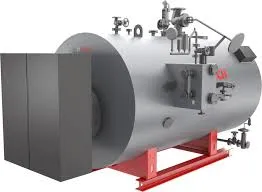
Jan . 30, 2025 05:37 Back to list
Biomass fired steam boiler
Experiencing issues with a steam boiler that refuses to turn on can be both frustrating and baffling, especially during colder months when heating becomes essential. Understanding the possible reasons behind such malfunctions, paired with expertise in troubleshooting, can help restore warmth efficiently and minimize downtime.
Furthermore, consider the safety switches designed to protect the boiler from potentially hazardous conditions. Safety controls could shut down the boiler if abnormal pressure or heat levels are detected. Examining these switches, and referring to the manual to reset them if necessary, may rectify the non-start issue. Nevertheless, persistent problems in this area often warrant professional assessment to avoid further damage. Sometimes, airlocks in the system pose a challenge. Trapped air within the pipes or radiators can prevent proper water circulation, causing the boiler to lock down. Bleeding the radiators to release trapped air can solve this problem and get the system functioning again. Consulting a certified technician should be considered when do-it-yourself solutions do not resolve the underlying issue. Expertise from a professional ensures any intricate underlying technical problems, such as faulty circuitry, worn-out components, or software issues, are addressed accurately. Regular maintenance checks, ideally before the onset of the heating season, can preempt many of these problems by keeping all components in optimal working condition. By aligning these troubleshooting strategies with professional expertise, the operation of steam boilers can be efficient and reliable. Regular systematic checks, a clear understanding of the working components, and prompt professional intervention when needed, empower homeowners and facilities managers to keep their environments warm and comfortable without unnecessary complications.


Furthermore, consider the safety switches designed to protect the boiler from potentially hazardous conditions. Safety controls could shut down the boiler if abnormal pressure or heat levels are detected. Examining these switches, and referring to the manual to reset them if necessary, may rectify the non-start issue. Nevertheless, persistent problems in this area often warrant professional assessment to avoid further damage. Sometimes, airlocks in the system pose a challenge. Trapped air within the pipes or radiators can prevent proper water circulation, causing the boiler to lock down. Bleeding the radiators to release trapped air can solve this problem and get the system functioning again. Consulting a certified technician should be considered when do-it-yourself solutions do not resolve the underlying issue. Expertise from a professional ensures any intricate underlying technical problems, such as faulty circuitry, worn-out components, or software issues, are addressed accurately. Regular maintenance checks, ideally before the onset of the heating season, can preempt many of these problems by keeping all components in optimal working condition. By aligning these troubleshooting strategies with professional expertise, the operation of steam boilers can be efficient and reliable. Regular systematic checks, a clear understanding of the working components, and prompt professional intervention when needed, empower homeowners and facilities managers to keep their environments warm and comfortable without unnecessary complications.
Share
Latest News
-
High-Efficiency Commercial Oil Fired Steam Boiler for Industry
NewsJul.30,2025
-
High-Efficiency Biomass Fired Thermal Oil Boiler Solutions
NewsJul.30,2025
-
High Efficiency Gas Fired Thermal Oil Boiler for Industrial Heating
NewsJul.29,2025
-
High-Efficiency Gas Fired Hot Water Boiler for Sale – Reliable & Affordable
NewsJul.29,2025
-
High Efficiency Biomass Fired Hot Water Boiler for Industrial and Commercial Use
NewsJul.29,2025
-
High-Efficiency Biomass Fired Hot Water Boiler for Industrial Use
NewsJul.28,2025
Related PRODUCTS
Copyright © 2025 HEBEI HONGZE BOILER MANUFACTURING CO., LTD. All Rights Reserved. Sitemap | Privacy Policy






















